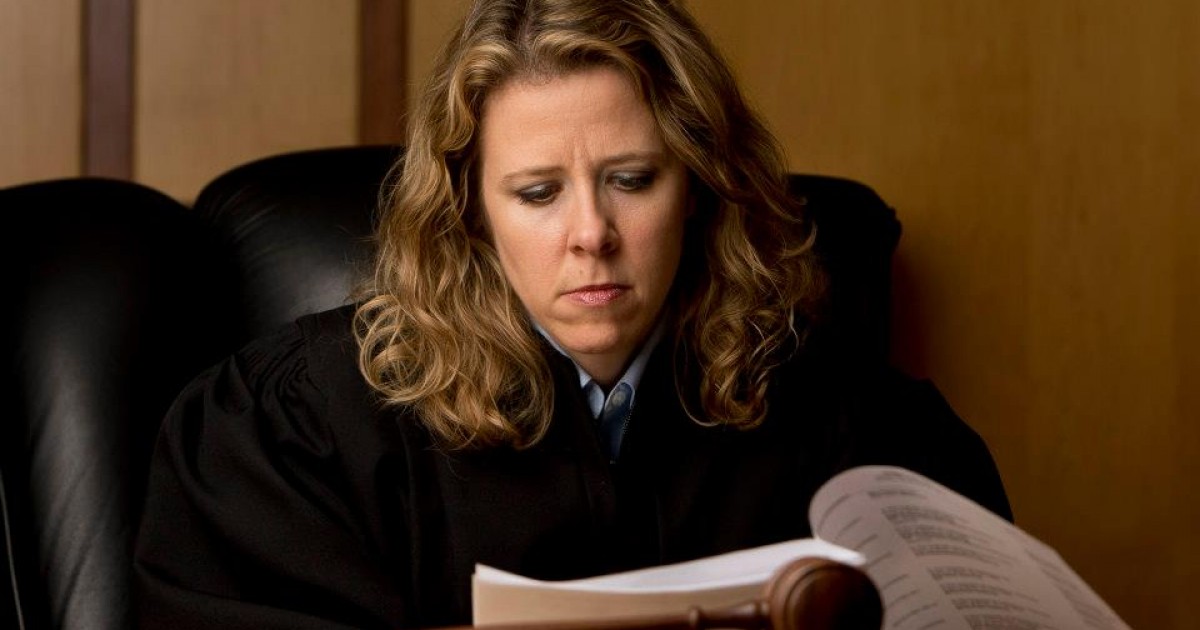Impact of Walker’s 59 Judicial Choices
He’s already replaced nearly one-fifth of judges in the state.
Republican Gov. Scott Walker’s only Supreme Court appointee, Justice Rebecca Bradley, earned a 10-year term on the court with a victory in the April 5 election.
Bradley’s victory capped the fastest career rise in the history of Wisconsin’s court system: Walker named her a Milwaukee County Circuit Court judge in December 2012, a Court of Appeals Judge in June 2015, and a Supreme Court justice four months later.
But, although Bradley won on April 5, two of Walker’s other appointees – Milwaukee County Circuit Court Judges Michelle Ackerman Havas and Paul Rifelj – lost.
There are 272 judges in state government’s court system: Seven Supreme Court justices, 16 Court of Appeals judges, and 249 Circuit County judges.
Walker has made 59 judicial appointments since taking office in January 2011. There is duplication in that number; it includes his three appointments of Bradley, for example. And, the governor made eight appointments of candidates who had just been elected so they could start immediately.
Overall, Walker’s appointees have kept those positions and, because the governor’s term isn’t up until January 2019, one of his legacies will be naming judges who will be deciding cases for decades.
Records show that, of about 50 Circuit Court judges appointed by the controversial Republican governor, only eight lost the next election – including Havas and Rifelj, who had been a judge for less than three months. Another Walker appointee, Dane County Circuit Court Judge James Troupis, chose to not seek election. Troupis, a former adviser and lawyer for Republican legislators, knew the political baggage he carried made it unlikely he would have been re-elected in deeply Democratic Dane County.
It depends, according to one veteran Milwaukee County official whose job doesn’t allow on-the-record punditry.
“I do think it being a Walker appointee played a big role in the Havas-Jean Kies race,” the official says. “Kies made it an issue in the race and she had very strong support from Democrats. I believe they rallied around her more than the Republicans who rallied around Havas.”
But there were other dynamics in place in Hannah Dugan’s victory over Rifelj, a judge for less than three months who lost by almost a two-to-one margin, the official adds. Walker’s political shadow “played a role, but not as huge as in the Havas-Kies race,” the source says, adding: “I believe that Hannah Dugan had greater name recognition because she had run before and also was very active in the legal community and has the same surname as a sitting judge, Timothy Dugan.
“Rifelj was really unknown outside of being a public defender at Children’s Court and I don’t know how actively he campaigned, how active he was in the legal community before his appointment, or in the community at-large before his appointment.”
Another Walker appointee, former Milwaukee County Judge Nelson Phillips, lost in 2012. Two Walker judicial appointees in Dane County also lost elections, Rebecca St. John and Roger Allen. Walker appointees also lost elections in Racine, Waupaca, La Crosse and Lincoln counties.
When there is a judicial vacancy, Walker’s office issues a press release advising candidates how to access the Governor’s Office Website and start the process of applying. After that, Walker aide Laurel Patrick said a three-step process is used to make judicial appointments:
*The Judicial Selection Advisory Committee (JSAC) does an initial review of applicants, including reviewing applications, talking to local attorneys and judges, and conducting interviews, if it chooses. The chair of JSAC is Michael Brennan.
*JSAC then makes advisory recommendations to the Governor’s Office, where the chief legal counsel, deputy legal counsel, and JSAC chair conduct a second round of interviews.
*They then make recommendations on who the Governor should interview. In the final step, the governor conducts his interviews with the chief legal counsel and makes his selection.
When he appoints a judge, Patrick said Walker looks for an outstanding attorney, someone with integrity and someone who understands the “proper role” of a judge. About one out of every four Walker judicial appointments has been a woman.
But Walker didn’t look very far to fill an important vacancy last July when he named Brian Hagedorn to the District 2 Court of Appeals. Hagedorn’s job? Chief counsel to the governor.
Steven Walters is a senior producer for the nonprofit public affairs channel WisconsinEye. Contact him at stevenscwalters@gmail.com.
The State of Politics
-
A Wisconsin Political Trivia Quiz
 Dec 15th, 2025 by Steven Walters
Dec 15th, 2025 by Steven Walters
-
The Fight Over Wisconsin’s House Districts
 Dec 8th, 2025 by Steven Walters
Dec 8th, 2025 by Steven Walters
-
The Battle Over On-Line Betting
 Nov 24th, 2025 by Steven Walters
Nov 24th, 2025 by Steven Walters























I believe a Walker appointee in the Eau Claire area was unseated this month, as well.
I don’t understand the point of this article. Judicial vacancies happen. Using a committee including some members of the public, the governor appoints replacements to finish out the terms. When those appointed judges run for reelection, a bunch of them get reelected, and a bunch of them do not. To me, that sounds like the system is working as intended.